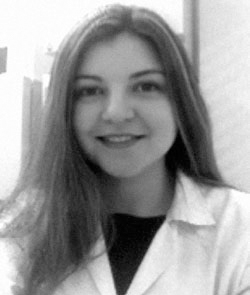
The TiO2 based photocatalyst has great potential for the disinfection of pathogens along with its well-known usefulness on various chemical pollutants. The disinfection property of TiO2 is primarily attributed to surface generation of reactive oxygen species as well as free metal ions formation. In this project, TiO2 based photocatalyst was used for the disinfection of the liquid digestate derived from anaerobic digestion systems i.e. biogas plant. It was found that disinfection of water contaminated with two bacterial strains (107 cfu/ml Escherichia coli and 106 cfu/ml Enterococcus faecalis) happened within the first 10 minutes (reduction of 3 logarithms) whereas total inactivation was achieved after 120 minutes (0.1 g/L P25, Degussa). Microbial revitalization experiments showed that the sample remained decontaminated. Then, chemical and microbiological profiles of liquid digestate of biogas plants were investigated. Based on findings, a synthetic effluent (20,000 mgO2/L Soluble COD) was generated to be used as a controlled substrate for the disinfection experiments. Photocatalysis was performed on the synthetic effluent inoculated with 107 cfu/ ml E. coli at a 1:10 dilution. No inactivation of microorganisms was observed during the first 3 hours of photocatalysis. It was found that the sample of 0.5 g/L of P25 showed a reduction of 3 logs after 25 hours of photocatalysis. Undiluted samples required almost the triple time for disinfection (70 hours). Furthermore, temperature experiments show that temperatures above 40°C can lead to false positive results. Currently, we try to improve TiO2 disinfection capacity and overall performance through modifications, we explore novel mechanical arrangements while a method for the treatment of real digestate samples is optimized to scale up the procedure.